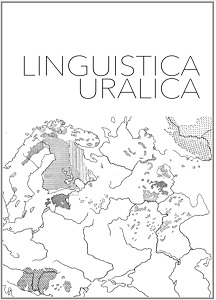«Желто-зелено-синие» языки в Евразии: как они появляются и исчезают?
The ”Yellow-green-blue” Languages in Eurasia: How Do They Appear and Disappear?
Author(s): N. V. Dubrovskaya, J. V. NormanskayaSubject(s): Semantics, Finno-Ugrian studies
Published by: Teaduste Akadeemia Kirjastus
Keywords: Uralic languages; Selkup language; colour terms; lexical typology; semantic structure;
Summary/Abstract: For the first time a comprehensive study of the colour terms denoting the semantic zones of ”yellow”, ”green”, and ”blue”, based on the material of the Uralic languages, is produced. The key material on the basis of which the comparison is made comes from authentic Selkup, taking into account dialect features. Conclusions are obtained about the etymology, semantic structure and typology of this class of vocabulary. As the analysis shows, the colour term system of the aboriginal peoples of Siberia is very different from the relevant systems well described for Indo-European languages. Data on colour terms were obtained not only from texts and lexicographic materials, but also from field work with present-day informants, in the course of which a number of linguistic experiments based on the analysis of the distribution of colour terms, as well as psycholinguistic experiments were conducted. The possible reasons for the originality of the linguistic picture of colours, in our opinion, can be clarified by analysis of attributive constructions containing the names of such natural objects which, to a certain extent, differ in colour from artifacts, i.e. from objects artificially coloured with dyes. An important result of the study concerns the genesis of colour systems. These conclusions are owed to the fact that for the first time the semantic maps of colour terms were built by combining data of the dialects of Uralic languages on one map. The study showed that some Uralic languages have a single term for ”yellow” and ”green”, while in some other languages there are ”blue-green” systems, and a few Uralic and Altaic languages use colour terms indicative of ”yellow-green-blue” system. The mapping of the lexical and semantic data was carried out by means of the Lingvodoc system. It indicates certain territorial specifics that can represent the orientation of the spread of linguistic phenomena: From the West comes the ”yellow-green” system, from the East comes the ”blue-green” system. They meet just on the territory of Southern Siberia and its vicinity, where, according to the first dictionaries, most of the colour designation systems in the 19th century were ”yellow-green-blue”.
Journal: Linguistica Uralica
- Issue Year: LVII/2021
- Issue No: 2
- Page Range: 113-135
- Page Count: 23
- Language: Russian

